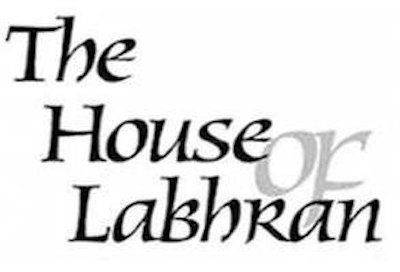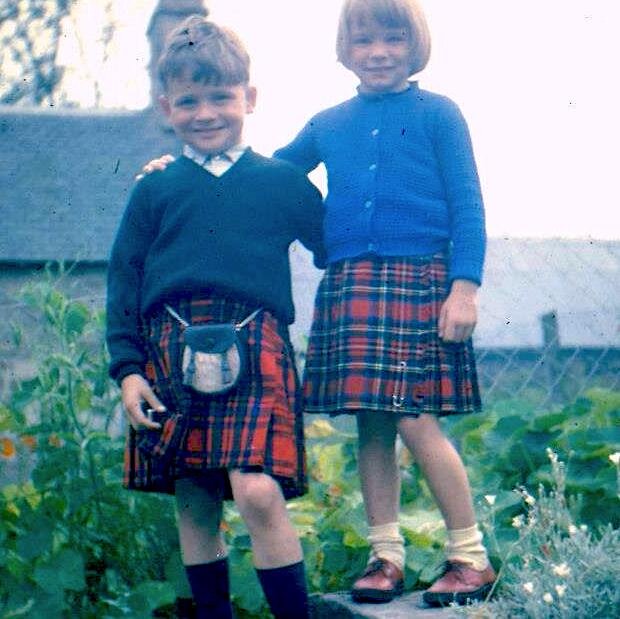Colin Cameron's Plaid Brooch - Piper to the Duke of Fife
Colin Cameron's Plaid Brooch - Piper to the Duke of Fife - We recently had one of those out of the blue emails from the great great granddaughter of The Duke of Fife’s piper Colin Cameron regarding his plaid brooch that she still has in her family collection. Kim actually was looking for some more information about the hallmark dates. This led to conversations that in turn led to us writing this blog with Kim’s help and family history. The Cameron family have a long and prestigious history in the great highland bagpipe. The term “Cameron style” has become a label for an approach to ceol mor linked to the famous Cameron family of pipers
Father of Colin Cameron - Prize piper Donald Cameron - Piper to Keith Stewart Mackenzie of Seaforth
The Cameron family of pipers
Donald Cameron (c. 1810 – 1868) and his brother Sandy were in fact born in Strathconon and moved to Maryburgh around 1845. They competed annually at the World Championships ("The Northern Meeting")
Donald Cameron first competed in Edinburgh in 1838, at 17 years of age, and won second prize. In the years after he won many prizes including: The Prize Pipe in 1843 and 1844; The Gold Medal in 1849, 1850, and 1859; Champion of Champions in 1862; King of Pipers.
In 1845, Donald Cameron was appointed Piper to Keith Stewart Mackenzie of Seaforth. In 1863 Seaforth presented him with the title deeds of one of the best houses in the village of Maryburgh.
Donald Cameron died in Maryburgh, on January 7, 1868 and was buried in the High Kirk, Inverness.
Donald had three sons, Colin, Alexander and Keith who were all outstanding players of Piobaireachd.
Donald Cameron, left, with his son Keith, right, and pupil Donald MacKay
Colin Cameron was born in 1843. He was taught by his father, won Prize Pipe in 1861, whilst employed as a piper by K Stewart MacKenzie. Gold Medal in 1865 whilst employed as a piper to Mr Malcolm of Glenmarog. He then became Piper to the Duke of Fife. Whilst employed by the Duke he started assisting David Glen with the correctness of his Glen’s Piobaireachd collection
Alexander Cameron was born about 1848. He was also taught by his father and won : Prize Pipe in 1867 and Gold Medal in 1870. Alick for some years piper to the Marquis of Huntly, and Keith.
Keith William Cameron born 1853 started to compete at the age of eleven. He was a Pipe Major of the Highland Light Infantry.
Donald Cameron was not only one of the true greats of the competition circuit, but also through his through his teaching of many leading pipers of the day. He wrote a number of light music tunes, including the strathspey Brahan Castle and 'Lord Breadalbane’s March, which was the forerunner of ‘Highland Wedding’.
Donald Cameron’s influence spread to the great piobaireachd compilers of the 19th century, with his own connections and through the playing and teaching of his sons. He was a personal friend of Angus MacKay. He had access to the extensive collections of Donald MacDonald, and in 1853 he started his own manuscript collection of bagpipe music which he passed on to his son Colin. These papers are now in the National Library of Scotland and its 80 tunes form a significant resource for serious students of piobaireachd.
Colin Cameron - Piper to the Duke of Fife
Colin Cameron - Piper to the Duke of Fife
Colin Cameron became known as the foremost living piobaireachd authority in the decades before his death in 1916 and he made important contributions to David Glen’s Ancient Piobaireachd (1880-1907) and General Thomason’s Ceol Mor (1900). Colin and his brother Alick would teach John MacDougall Gillies (1855-1925), whose influence on piobaireachd in the early 1900’s, approached that of the great John MacDonald of Inverness.
Seaforth Cottage, Maryburgh was given to Donald Cameron, and became the Cameron school of Piobaireachd. It was lived in by Donald, then his son Colin and grandson Colin. Colin's son, also called Colin Cameron, he was the last member of the Cameron family to live at Seaforth Cottage in Maryburgh.
Colin Cameron's Plaid Brooch - Piper to the Duke of Fife
The Colin Cameron Plaid Brooch
The First Duke of Fife, Alexander William George Duff (10 November 1849 – 29 January 1912), became Duke when he married Princess Louise, the eldest daughter of King Edward VII. Princess Louise of Wales, Princess Royal. On Saturday 27 July 1889, Lord Fife married Princess Louise, the eldest daughter of the then Prince and Princess of Wales, at the Private Chapel at Buckingham Palace.
The couple were third cousins in descent from George III. Two days after the wedding, the Queen elevated Lord Fife to the further dignity of Duke of Fife and Marquess of Macduff, in the County of Banff.
It is thought that the plaid brooch was a gift to his new wife Princess Louise on their wedding day. However, it had originally belonged to the Duke’s mother Lady Agnes Countess Fife, when his parents married in 1846.
The silver hallmarks on the plaid brooch are for London with a K date letter for 1845 and a makers mark WF thought to be William Fielder using his 1841-47 WF mark.
The Duke’s mother was Lady Agnes Georgiana Elizabeth Hay (12 May 1829 – 18 December 1869) an Irish-Scottish aristocrat. The London hallmark date letter of 1845 on the plaid brooch and the initials in the form of a monogram - cypher in the centre suggest the pin might have been made for the Duke's mother when she was married the Fifth Earl of Fife James Duff on the 16th March 1846 at British Embassy, Paris, France. Lady Agnes died in 1869.
When Alexander Duff Lord Fife and Princess Louise Princess Royal married on Saturday 27 July 1889 he was elevated to the Duke of Fife and Marquess of Macduff. The letters patent creating the dukedom contained the standard remainder to heirs male of the body lawfully begotten.
However, it became apparent that the Duke and Duchess would not have a son. Therefore, on 24 April 1900, Queen Victoria signed letters patent creating a second Dukedom of Fife, along with the Earldom of Macduff in the Peerage of the United Kingdom with a special remainder: in default of a male heir, these peerages would pass to the daughters of the 1st Duke and then to their male descendants.
Colin Cameron's Plaid Brooch - Piper to the Duke of Fife - engraved reverse of the plaid brooch
On a trip to Egypt in December 1911 the Duke of Fife and his family were shipwrecked off the Moroccan coast.
The Duke became ill with pleurisy and died in 1912. Colin Cameron led the pipers at the Dukes funeral and played the tune ‘ The MacIntosh’s Lament’ .
The plaid brooch was presented to Colin Cameron, by The Princess Royal the Duchess of Fife, after the Duke's funeral.
On the reverse of the plaid brooch it had been engraved with the details of the presentation.
From
The Princess Royal
To Colin Cameron - August 1912
A few days after the Duke’s funeral he met up with writer and naturalist Seaton Gordon at Dinnet for a Piobaireachd competition. Colin told Seaton Gordon about the occasion in 1861 aged 18 he won first prize in the Piobaireachd at The Northern Meeting Inverness.
Colin Cameron was known for playing many fine tunes including ‘The End of the Great Bridge' that had another name ’Clan Cameron's Gathering Tune’. His Piobaireachd Manuscript contains 84 tunes and is one of the most important Victorian sources of Piobaireachd. The first three tunes in the collection are notated by Colin’s father Donald Cameron in a rather tentative hand, the remainder in a bold and fluent script by Colin.
Throughout his life he also instructed many great pipers of the later 19th century and early 20th century including John MacDougall Gilles ( born Aberdeen 1855 ). Major-General C.S Thomason Royal Engineers ( Bengal ) and one of the great collectors of piobaireachd manuscripts lists Colin as one of his great piping friends “ for the list is a good genuineness of the work “ they were
Musical Notation for Piobaireachd by Major-General C.S Thomason
Donald MacKay Piper to H.R.H The Prince of Wales
Colin Cameron Piper to the Duke of Fife
Pipe Sgt A. Patterson 2nd HLI
Pipe Cpl K. Cameron 2nd HLI
Pipe Sgt D. Fraser - Late of the Seaforth Highlanders
The Colin Cameron died in 1916 aged 73 and his plaid brooch has since been passed down through members of the the Cameron family.
Colin Cameron ( had four children: Alice, Colin, Evelyn and Alexander ).
Evelyn Ellen Fraser - nee Cameron ( daughter of Colin Cameron received the plaid brooch after her father’s death ). She died at the age of 20 a few days after giving birth to Evelyn Helen Fraser.
Evelyn Helen Fraser was raise by her father Alexander Fraser who was head forester for the Brahan Estate, 3.5 miles (5.6 km) south-west of Dingwall, in Easter Ross and lived at Tallie-sau.
Evelyn Helen Fraser married John Matheson ( Dingwall ) - They then lived in Maryburgh, next door to her uncle Colin Cameron ( Jnr ) and the original Seaforth House.
John Matheson passed the plaid brooch on to his grand daughter Kim Scheer- USA.
175 years of family and great highland bagpipe history
© House of Labhran - Kim Scheer USA








